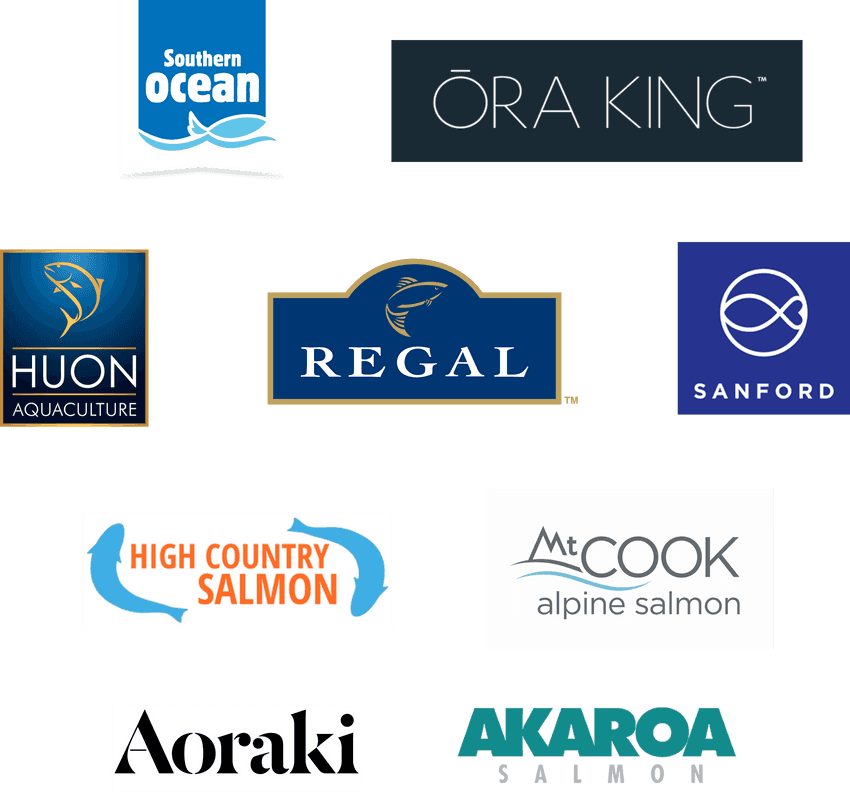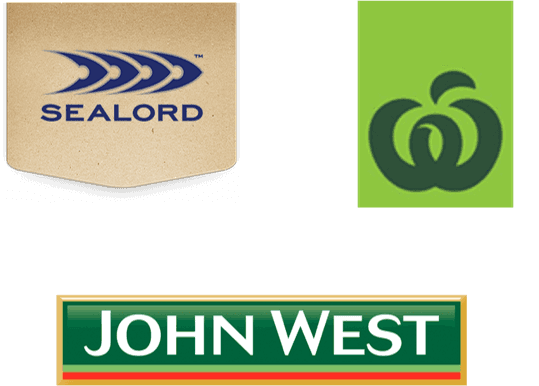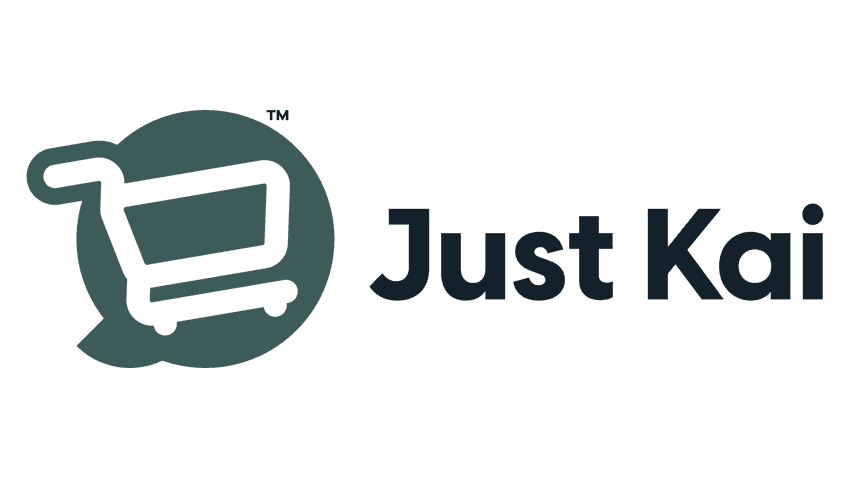Original research completed in 2018; information verified and various sections updated from July to October 2020, expanded June 2023, minor revision July 2024.
Slavery is common in the supply chains of fish products. For salmon, the main areas of risk are the fish feed fed to farmed salmon and factory processing of tinned salmon.
We contacted New Zealand’s largest salmon brands to ask about their supply chains. In our guide below, we explain our findings and share tips on how to buy salmon whilst supporting the human rights of those involved in the supply chain.
_________________
Salmon sold in New Zealand can be either:
- Wild-caught salmon or
- Farmed salmon (from NZ or overseas)
Wild-caught salmon is used in processed products, such as tinned fish and ready-made meals. Fresh or frozen salmon has generally been farmed.
What’s the problem?
Wild-caught salmon
Wild-caught salmon sold in New Zealand generally comes from Alaska, British Columbia, or the US Pacific North-West.
Out of these, Alaskan salmon is the most common. We haven’t come across any evidence of forced labour in Alaskan salmon-fishing. While it’s clearly hard work (you can read about the experience here and here), those working on the boats freely choose to enter into it, and the pay can be quite good. Salmon-fishing conditions in the US Pacific North-West and British Columbia seem to be similar. Further, if the fish processing happens locally, salmon from these areas is very likely to be slave-free.
However, if the salmon is shipped to another country for processing, there is increased risk of slave labour. For example, processing factories in Thailand have been known to use forced labour.
We asked several brands about the origins and processing of their wild-caught salmon products – see ’What’s happening in their supply chains?’ below.
Farmed salmon
Farmed salmon sold in New Zealand tends to come from either local salmon farms, or farms in Norway or Australia. (We haven’t found farmed salmon from any other countries being sold here, but if you find any let us know!)
Slave-labour is unlikely to be used in the salmon farms of these countries – the Norwegian industry is highly regulated, and New Zealand and Australia have strong labour laws.
However, all farmed salmon is fed on fish meal and fish oil made from wild-caught fish, and this often comes from locations where severe abuse occurs.
If fish feed comes from Peru or the EU, it is likely to be free from slave labour. In Peru, the fishers are highly collectivised, and the fish meal factories are automated and require highly skilled labour. The EU fishing industry is also highly regulated.
But there can be significant slavery concerns with fish feed caught and processed in other countries. For example, Thailand (one of the other major suppliers of fish feed) is known to have cases of slave labour.
We asked New Zealand salmon farms where their fish feed is sourced from – see ’What’s happening in their supply chains?’ below. We also reached out to two companies selling salmon farmed overseas.
How to buy salmon without supporting slavery
For fresh, frozen, and smoked salmon, we recommend Southern Ocean, Ōra King, Huon, Regal, Sanford*, High Country*, Mt Cook*, Aoraki* and Akaroa.

If you’re buying unlabelled salmon (e.g. from your local sushi shop or the supermarket fish counter), ask if it was farmed in New Zealand. All New Zealand farmed salmon is slave free.
For tinned salmon and ready-made meals, we recommend Sealord, John West, and Countdown Select.

When researching the above brands, we found that the supply chains involved in their salmon products either use low-risk countries, or have processes in place to prevent slave labour. See ’What’s happening in their supply chains?’ below for more info.
*At last check (Sep 2020), we learned Sanford, Mt Cook, Aoraki, and the fish counters at PAK’nSAVE and New World were all currently selling slave-free salmon. This was due to the particular suppliers they happened to use at the time. However they haven’t made commitments to be slave-free like some of the other companies have, so we’re a bit hesitant about them in case they switch to an unchecked supplier in future.
What’s happening in their supply chains?
Below is a brief overview of what we found out about each company’s supply chains. For more detail see our research notes.
Wild-caught salmon
As described above, if salmon is both caught and processed within Alaska, it is highly likely to be slave-free. If Alaskan salmon is shipped overseas for processing, there is greater risk of forced labour.
We contacted John West, Sealord, Pams, and Countdown (they sell salmon under their own brand ‘Select’) to ask about their processes. We found that:
- John West salmon is caught and processed in Alaska.
- Sealord salmon is also caught and processed in Alaska, and their processing factories are independently audited to ensure good labour practices.
- Countdown Select salmon is caught in Alaska. While most of the processing takes place in Alaska as well, some is shipped to Thailand. Countdown’s own brand factories are audited based on human rights and labour practices considerations so, despite Thailand being a high-risk location, Countdown’s Thai-canned salmon is still low risk.
- Pams mark some of their salmon as ‘Alaskan’ and some is unmarked. We don’t know where the unmarked variety is caught, nor where any of it (Alaskan or otherwise) is processed. All Pams told us was “All of our suppliers are expected to adhere to robust food safety standards and the relevant legislation, including labour laws, in place in either New Zealand or their country of business.” Unfortunately, without actively checking such standards are being adhered to, Pams can’t really know if slave labour is being used or not – expectations aren’t enough. Without more information we can’t tell whether Pams salmon is slave-free.
Note: John West mentioned above is the Australian and New Zealand company, not the John West brand in Europe (which is owned by a different company).
Farmed salmon
Farmed salmon from New Zealand
As described above, if the fish feed used at New Zealand farms comes from Peru or EU, it is likely to be slave free.
We asked all the salmon farms that belong to the Salmon Farmers Association of New Zealand about the source of their fish feed. This includes the salmon farms by:
- New Zealand King Salmon
- Sanford Bluff Salmon
- Mt. Cook Alpine (who also have the brand Aoraki)
- Akaroa
- High Country
New Zealand King Salmon uses fish feed from Peru and the EU. In our communications with them, they seemed well aware of the issue of human rights abuses and are intending to continue sourcing from low-risk countries in future.
The brands Southern Ocean, Ora King and Regal are all by New Zealand King Salmon.
Sanford Bluff Salmon, High Country and Mt Cook Alpine also use fish feed from Peru and the EU. However, they hadn’t made ongoing commitments to use suppliers without slave-labour in future, so we’re slightly less confident about them.
Akaroa purchases from a supplier that primarily sources fish from low-to-medium risk areas such as Peru and the EU, and conducts internal audits regularly. We’d prefer third-party audits, however what they have in place at present feels sufficient, given they are primarily operating in low-to-medium risk areas.
Farmed salmon from overseas
We contacted two companies selling overseas farmed salmon in New Zealand: Ocean Blue (a brand of MaxFoods) and Huon Aquaculture.
Ocean Blue markets Norwegian salmon.
It is fairly likely their salmon is slave-free, as the EU does attempt to ban the import of products where forced labour has occurred. However, we can’t be sure without more information, and Ocean Blue didn’t reply to our queries.
Huon Aquaculture’s salmon is farmed in Tasmania in Australia.
Huon’s feed comes from two suppliers. One supplier sources fish from Peru and the EU, which as mentioned above, means the fish feed is likely to be slave-labour free. The other supplier sources fish from several low-to-medium risk areas, and conducts internal audits regularly. We’d prefer third-party audits, however what they have in place at present feels sufficient, given they are operating in low-to-medium risk areas.
Farmed salmon sold at the supermarkets
The salmon at Countdown’s fish counters comes from either New Zealand King Salmon or from Huon.
The salmon at PAK’nSAVE and New World’s fish counters comes from either New Zealand King Salmon or Sanford.
All three of these suppliers (New Zealand King Salmon, Huon, and Sanford) are likely to be slave-labour free as discussed above.
Related articles
For more information on this topic:
For other types of fish products, check out these pages:
- Shopping guide: Tinned tuna and sardines
- Research notes: Fish oil and omega 3 supplements
- Research notes: Fish in petfood

Our bottom line is that fish, cocoa and sugar should be free of child and slave labour right back to the original boat or farm.
Within this, where possible we also:
- identify goods produced in low-income countries (as buying those increases employment opportunities there);
- identify which goods are produced in the best labour conditions available (as supporting those brands will increase the pool of good jobs people have to choose from).
Find out more about our principles and check out our other guides.